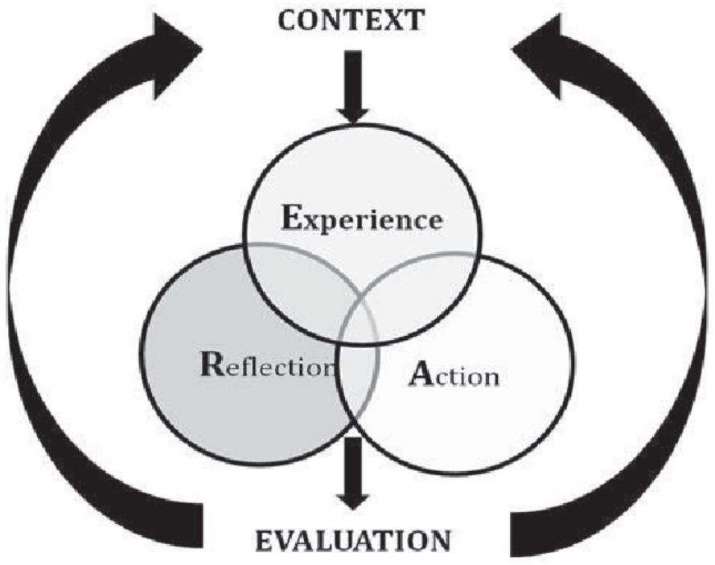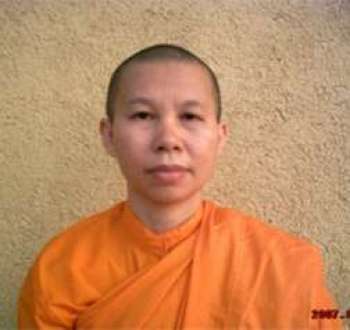Buddhistdoor View: Beyond Competition and Toward Cultivation
By Buddhistdoor Global
Buddhistdoor Global
| 2019-05-18 |  St. Ignatius of Loyola. From stmarymagdalen.org
St. Ignatius of Loyola. From stmarymagdalen.orgOur last Buddhistdoor View discussed some of the problems found in a culture of extreme competition, pressure, stress, and selfishness.* While we noted the need to develop a strong sense of self, we saw in the Buddhist doctrine of anatman (non-self) an opening for the development for young people in a more compassionate setting.
This commentary will explore educational paradigms that embody what might be called “humanistic” ideals, in the sense of being centered on the education of the student as a complete human in a context of broader humanity. The first of these comes from the Catholic tradition of St. Ignatius of Loyola (1491–1556). The second draws more explicitly from Buddhist ideals.
We look first at the Ignatian pedagogical paradigm, in part because it was so stunningly progressive for its time and is still an extraordinary model for education in our modern world. “Ignatian pedagogy is inspired by faith. Those who do not share this faith can gather valuable experiences from this document because the pedagogy inspired by St. Ignatius is profoundly human and consequently universal.” (Ignatian Pedagogy, abridged, 1)
Attention to care for the individual student (known by the Jesuit term cura personalis) made the first Jesuit teachers attentive to what really helped learning and human growth. And they shared their findings across many parts of the world, set out in the Ratio Studiorum, the Jesuit code of liberal education which became normative for all Jesuit schools. (Ignatian Pedagogy, abridged, 1)
The paradigm, or system of study, was based on a rich teacher-student relationship and five core components: context, experience, reflection, action, and evaluation.
 Components of the Ignatian pedagogical paradigm. From researchgate.net
Components of the Ignatian pedagogical paradigm. From researchgate.netKeeping in mind the context of each student, the Ignatian teacher is advised to first understand the student as a person. What is the student’s life like? What is their background? Can any particular strengths or weaknesses be discerned? This may seem impossible in our modern fast-paced world, but the time spent here will almost always pay off down the road, when difficulties can be more quickly evaded or overcome, or when a particular skill is needed.
The next step is experience. “Experience for Ignatius meant ‘to taste something internally.’ In the first place this calls for knowing facts, concepts, principles. This requires one to probe the connotation and overtones of words and events, to analyze and evaluate ideas, to reason. Only with accurate comprehension of what is being considered can one proceed to valid appreciation of its meaning. But Ignatian experience goes beyond a purely intellectual grasp. Ignatius urges that the whole person (mind, heart, and will) should enter the learning experience.” (Ignatian Pedagogy, 12)
The third step in Ignatian teaching is reflection. “We use the term reflection to mean a thoughtful reconsideration of some subject matter, experience, idea, purpose, or spontaneous reaction, in order to grasp its significance more fully. Thus, reflection is the process by which meaning surfaces in human experience. . . .” (Ignatian Pedagogy, 14)
Fourth is action, following the Ignatian dictum that “love is shown in deeds, not words.” In this step, the student acts on his or her reflections and experiences. For example, the student might repeat or expand on experiences that have gone well, or might rethink their commitment to areas that have not: perhaps they need to study more to ensure better grades and maybe drop one extra-curricular activity to make needed time in their schedule.
 Bhikkhuni Dhammananda. From snfwrenms.wordpress.com
Bhikkhuni Dhammananda. From snfwrenms.wordpress.comLastly is evaluation. In the Ignatian paradigm, this goes beyond the usual standarized examinations that have become the bain of most educators in countries where they have been deployed. The goal here is to assess the growth of the whole person. Suggested pedagogical approaches include “mentoring, review of student journals, student self-evaluation in light of personal growth profiles, as well as review of leisure time activities and voluntary service to others.” (Ignatian Pedagogy, 17)
With these steps in mind, what might a particularly Buddhist system of education look like? In many ways, a Buddhist system could be remarkably similar. As Bhikkhuni Dhammananda writes: “Buddhism gives the highest regard for wisdom (panna) and purity (visuddhi) of the mind from mental defilements, and the worst condemnation for ignorance. In Buddhism wisdom is the sharpest means to cut off all impurities. But what we are talking about here is knowledge (nana), of course, knowledge and wisdom are not equivalent terms. For one can collect knowledge by learning, but not wisdom. Wisdom is not something that is accumulated, but it comes from a deep reflection.” (BuddhaSasana)
She goes on to discuss the three-step model of learning, thinking, and meditation with the guidance of a good teacher. She writes that “in a traditional way the newcomer has to remain with a teacher (upajjhaya) for as least five years in order to learn the way of monastic as well as scriptures, meditation subject, etc. The methods of learning are: listening, memorizing, reciting (verbally), investigating the meaning by himself or interrogating with Dhamma friends or teacher to clear the meaning.” (BuddhaSasana)
Again, in our busy and often-fragmented education system, this length of mentorship and mutual learning and growth can seem like an incredible luxury. Nonetheless, in even a very short period of time a student can start out by making a direct human-to-human connection.
Asking students in the first class to simply say a bit about themselves, or to write a short autobiography can give the teacher insight into the particular context of their students, and can encourage the student to bring their whole being to their learning. Once this connection is established, which in the first step requires the teacher to learn from the students, the flow of information can be reversed. Thus the cycle of listening, memorizing, and so on, between students and teacher may commense.
It is the meditation stage that is the most important, as this is where knowledge is transformed into wisdom, where small transformations of the whole person take place.
It was not long ago that education systems around the world valued what is often called unstructured time: recess, quiet time, time for free reading or personal art projects. It is, or was, in this time that even very young students could creatively piece together the various components of their experience. This is very similar to the work done in meditation: in a particular setting, yes, but open to what arises, curious about the mind and its activities, rather than directed at any particular sense of progress.
This promotion of doing nothing in particular cuts against the stream of contemporary culture. And perhaps, in a culture seemingly drowning in cycles of greed and aversion, that is exactly why it is so greatly needed.
* Buddhistdoor View: Buddhist Ideas on School Life, Competition, and Anatman (Buddhistdoor Global)
See more
Buddhist Attitude to Education (BuddhaSasana)
Ignatian Pedagogy: an abridged version of the document on teaching and learning in a Jesuit school (Jesuit Institute London)
Ignatian Pedagogy A Practical Approach (Jesuit Institute London)
Related Features from Buddhistdoor Global
Finding Ways to Educate Our Children with Buddhist Wisdom
Buddhistdoor View: Cultivating Non-Attachment in the Midst of Pressured Living
Into the 21st Century: The Educational Modernization of Chinese Buddhism
The Development of Chinese Buddhism in the US: Interview with Venerable Chaofan


















